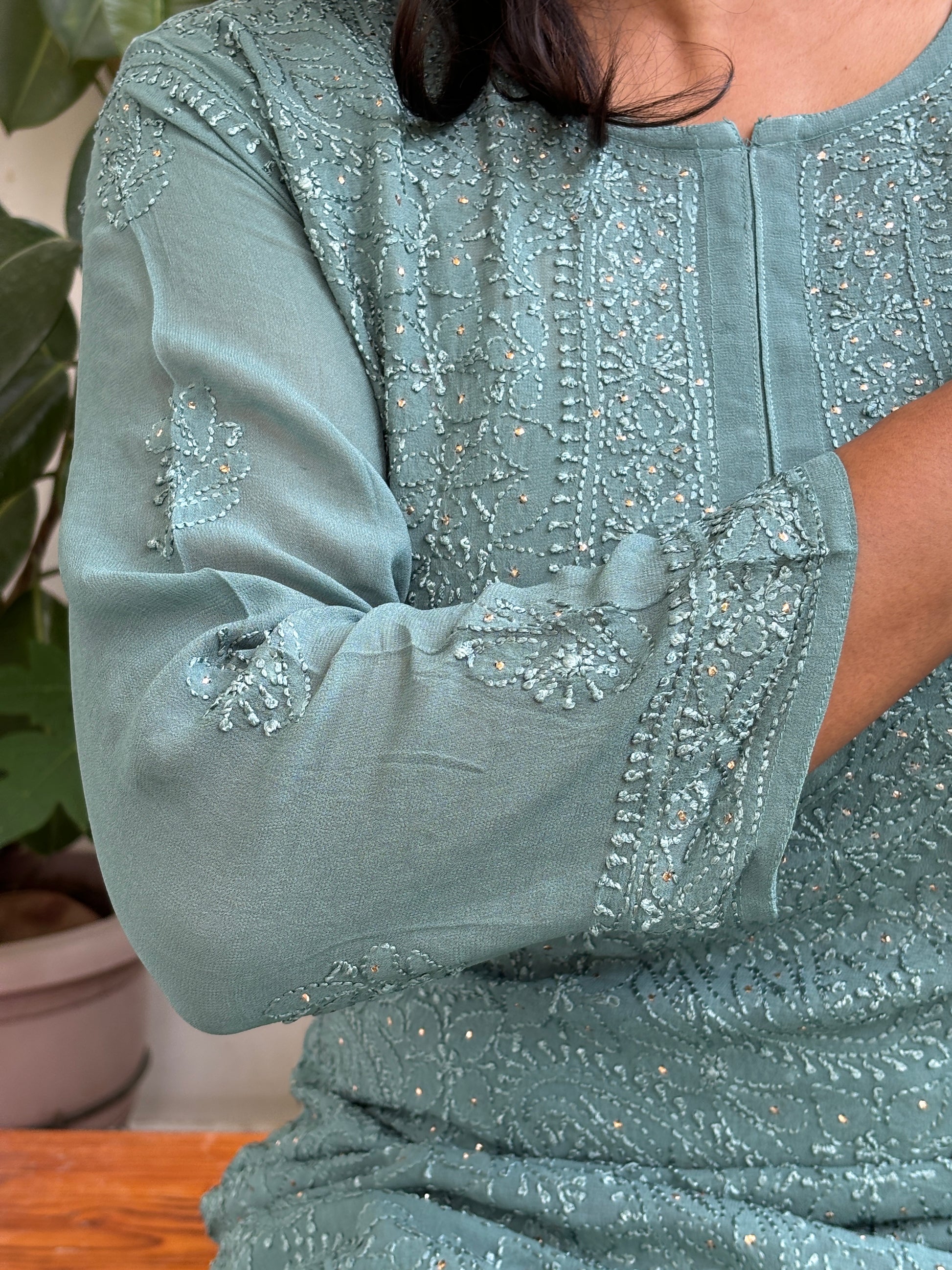Chickankari Patterns: Price ki Real Seal
Share
When you see a Chikankari kurti, and its price you generally go, *“Yeh itna mehenga kyun hai?”* Well, here’s the thing — Chikankari is not just embroidery, it’s an art.
Most pieces are still handmade (हाथ से बनी हुई). Women in villages or even urban areas sit at home and do this delicate work by hand. It takes hours, sometimes days to finish just one kurti. That’s why it’s expensive.Its labor intensive.
Haan, kuch factories have started to do machine work, but *real* chikankari = handmade magic.
And btw, if you see a loose thread (ढीला धागा) or an unfinished flower (अधूरा फूल) — don’t panic. That’s the beauty of chikankari.
---
Types of Work: Resham Dhaga vs White Dhaga
 Resham Dhaga : Slightly shiny, silk-like threads, usually in colors. Looks rich.
Resham Dhaga : Slightly shiny, silk-like threads, usually in colors. Looks rich.
White Dhaga : The classic chikankari look — white thread on white kurti. Timeless.
Both are equally pretty, but resham can sometimes cost more because of the threads used.

Hand Work Vs Machine Work :
Handmade chikankari in the same fabric will always cost higher—because each piece takes days (kabhi kabhi weeks) to complete by skilled artisans. That human effort makes it truly valuable ❤️.
On the other hand, machine work can produce dozens of kurtis in just one hour, so naturally it’s cheaper.
👉 Handmade will always carry imperfections—loose threads, unfinished flowers, uneven spacing. That’s its beauty.
👉 Machine embroidery will look dense, uniform, and “too perfect”.
---
Popular Designs: Phool-Patti aka Ghaspatti

Ghaspatti (घासपत्ती)— leafy & floral patterns, usually a bit dense (गाढ़ा काम).
Simple flowers (फूल) — can be the same color as the kurti or contrast color.
Dense patterns = more time = higher price.
Simple floral = less time = more affordable.
Extra Glam: Mukaish Work

Photo: Local Nation
If you see tiny sparkles stitched into the kurti → that’s Mukaish Work.
* Gives a festive vibe.Adds luxury.
* Price? Goes easily up to ₹2500 or more.
Royal Glam: Cutdana Work
 Photo: Haania
Photo: Haania
* Tiny faceted beads sewn on to catch light and sparkle —Seen on fancy chikankari kurtis, especially with pearl/sequin combo in georgette or viscose
* Price? Rs 3000 or more.
So when you're shopping, remember:
It’s handmade Or Machine work— women artisans spend hours on each piece, preserving a centuries-old craft.
Thread choice matters— white-on-white offers delicate charm, while resham brings richer, more colorful elegance.
Patterns & detailing add cost— denser floral vines (ghaspatti), metallic dots (mukaish), or sparkly beads (cutdana) step up the price tag.
This is not just embroidery — it’s artistry, heritage, and a wearable legacy from India’s heart of craftsmanship.❤️
